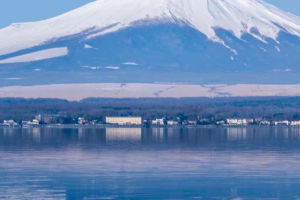When it comes to deserts, because no grass and dryness always make people think of desolation, in everyone's eyes, shouldn't deserts be yellow? What about the white desert? Let's take a look at the largest white desert in the world.
The Farafra White Desert in Egypt is located near an oasis more than 300 kilometers southwest of Cairo in western Egypt. The sand here is creamy, snowy white, in stark contrast to the yellow deserts in other parts of the world.
The White Desert takes its name from the white limestone that towers high in Egypt's White Desert, carved into different shapes by thousands of years of sandstorm erosion, like giant mushroom clusters. Walking among the dunes of Farafra feels like walking through a giant ice cream in Lilliput.
The white rocks were piled up in large clusters, like mushrooms bursting out of the sand. The camel-shaped giant rocks on the white sand dunes seem to be gazing at the Sahara in the distance. Note-shaped small rocks are scattered in the desert, like a beating melody, hitting a wonderful movement in the wind.
Pieces of cloud-shaped small rocks cover the desert. From a distance, it seems that the white clouds in the sky are floating in the desert, adding a bright touch to this monotonous yellow desert, and one cannot help but admire the magic of nature. The scenery of the white desert is mesmerizing. Whenever the sun rises, the morning light sprinkles on this white sand, and a holy light rises up.
In addition to this white desert, there are other deserts that are as famous as it. They are very mysterious but have an inexplicable attraction and are full of many unknowns. Let's take a look at them together.
1. The Sahara Desert
The Sahara Desert existed 2.5 million years ago and is the largest desert in the world outside of Antarctica. The northern part of the desert is surrounded by the Atlas Mountains and covers an area of 8.6 million square kilometers, almost all of which is North Africa. Although the temperature is extremely high, it attracts many tourists from all over the world, and the tourism industry is developing very well.
Driven by the wind, the face of the Sahara Desert is constantly changing. Its huge sand seas and dunes have reached a maximum height of 500 meters, and these dunes are re-destroyed and shaped into different shapes every day. The Sahara Desert is full of mystery. Before the formation of the Sahara Desert, it was full of caves filled with carvings and paintings, such as swimming murals.
2. Kalahari Desert
The Kalahari Desert is very large in size and extremely diverse in climatic and physical characteristics. But only the Southwest can be said to be a true desert, with grassy ridges and little red dunes. Under the guardianship of several South African national parks, wildlife thrives here, including lions, leopards, cheetahs, giraffes and more.
Some of the most productive diamond mines in the world are also found in the Kalahari Desert. The humans who inhabited these open spaces about 20,000 years ago are the ancestors of the Bushmen who live there today. Their ancient relatives left behind rock art and their history was recorded in a very personal way.


